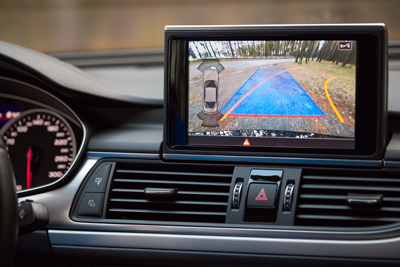A first-of-its-kind consumer survey conducted by the Insurance Institute for Highway Safety (IIHS) showed the majority of people who own a vehicle with increasingly popular ADAS features are reporting issues with those features after a repair for any reason---but especially when the repair was the result of crash damage, or a windshield replacement.
While the self-reported survey of a sample of about 500 owners in the U.S. cannot say exactly how widespread the problem really is in the entire registered fleet, it’s a clear sign repairers need to invest in the tools and training to perform calibrations, and automakers need to make that information more accessible, said Alexandra Mueller, senior research scientist at IIHS and the study’s designer, in an exclusive interview with Autobody News.
“Changes need to be made, and there are definitely solutions that can be implemented,” Mueller said.
The survey, conducted in 2021, sought out owners of vehicles model year 2011 and newer, that had certain popular ADAS features: front crash prevention, which includes automatic emergency braking and front collision warning; blind spot monitoring; and cameras, including those providing rear and 360-degree views.
Of the 3,000 owners contacted, about 500 had taken in their vehicles for repairs and participated in the survey; 40% of those said their vehicles were a model year 2019 or newer.
Post-repair problems with ADAS were substantially more common among people who had features repaired because of crash damage or in connection with a windshield replacement. About two-thirds of owners whose ADAS feature repairs involved windshield replacement and nearly three-quarters of those whose repairs were required due to crash damage said they had issues with the technology after repair.
In contrast, fewer than half of owners who had repairs done for other reasons---like a recall or service bulletin from the automaker---faced problems afterward.
Mueller said since the survey is self-reported, the results only point to where issues might be.
“We don’t really know how big this problem is in the registered fleet as a whole,” she said.
Dealership vs. Independent Repairer
People who had taken their vehicle to an independent repairer reported more problems than those who had gone to a dealership service center. For example, among people whose vehicles had front crash prevention features repaired, 46% who went to a dealership reported issues, compared to 70% of people who had gone to an independent repairer.
Those whose vehicles had blind spot monitoring and cameras reported similar rates of problems after going to a dealership or an independent repairer.
Mueller said this result was not surprising.
“A dealership service center specializes in their automaker; they have specific training and tools and the space required to do calibrations properly,” Mueller said. “A lot of independent repair shops are just not that large.”
Even people who went to dealerships for repairs still had issues, Mueller said.
“It’s a concern that many said recalibration was performed, if they had the repair done for damage,” she said. “It seems calibration is the weakest link here. We are seeing repairers having difficulty implementing the instructions and specifications set by automaker to calibrate these systems.”
Some people reported the original ADAS issue was resolved, but a new one started. However, the survey didn’t go into detail about what those issues are, Mueller said. The survey also did not ask what issues exactly people were experiencing post-repair---they may be safety related, or they may just be an annoyance, like false alarms.
“We just know people are reporting the systems are not working the way they should be,” Mueller said. “This study was to highlight if there are areas of concern that we need to start paying attention to, and the study results show that yes, there are.”
One reassuring finding, Mueller said, was that survey respondents said despite the post-repair issues, the overwhelming majority said they would still buy another car with the same ADAS features.
“These features have safety benefits,” Mueller said. “The data are unequivocal, and show these systems help prevent crashes and reduce the severity if they do get in one. Even though many were complaining about issues after repairs, they still want the technology, they still see the value of the technology.
“This is so important---we need to see this technology rolled out to reduce a very serious public health issue with respect to traffic safety,” she said.
Takeaways
Mueller said the survey’s main conclusion is the general repair process is becoming more complicated, and it is affecting consumers and their vehicles once they return to the road.
If repair issues become more common and the industry cannot resolve them, it will create inconvenience that could undermine consumer confidence in the technology.
“We have to get the repair process more refined to start resolving these issues, again because of the safety potential of these technologies,” Mueller said.
The IIHS is planning future studies to fully understand the scale and severity of the issues reported in this first study.
Meanwhile, Mueller said, automakers can help by making vehicles easier to repair, and by simplifying and establishing centralized databases that contain repair and calibration information so technicians can access it, whether they are in a dealership service center or an independent shop.
Self-diagnostic communication strategies---like those used by the tire pressure monitoring systems common in vehicles--- could be used for ADAS features, to tell a repairer or driver something is not right.
“We need to help facilitate the repair process and support consumer confidence in these technologies, because most people get a vehicle repaired at some point in their life, and we want to make sure consumer confidence remains high in these very important technologies,” Mueller said.















Abby Andrews